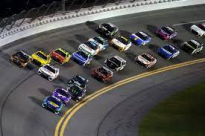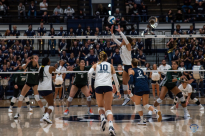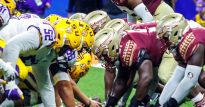In Memoriam: Elgin Baylor, the Original High-Flyer
Hoopers wanted to be him yet few appreciated him. In the time of ball movement, dominant low-post scorers and short shorts, one man stood head and shoulders above his peers in skill, charisma and humility: Elgin Baylor.
In an era where YouTube and League Pass didn’t exist (heck, it was even difficult for the Lakers to draw listeners on the radio before they hired Chick Hearn in 1960), Baylor created his own reputation for high-flying, explosive offensive performances. But because of racial barriers, it all might have never happened.
Growing up in the Washington D.C. area, Baylor struggled to find a basketball court to play on, as there was a ban on African Americans using most of the courts and facilities around the city. Despite the racial obstacles and academic struggles in his way, Baylor reached Seattle University on a scholarship and led Seattle to the national championship in 1957, losing to Kentucky. To this day, it remains Seattle’s only FInal Four appearance in program history.
Selected as the No. 1 pick to the then-Minneapolis Lakers in 1958, Baylor immediately impacted the franchise. Prior to Baylor’s arrival, the Lakers posted an abysmal 19-53 record and were on the verge of bankruptcy. Once Baylor suited up and hit the floor, he captivated the fans and his teammates, leading his team to the NBA Finals just one year after it possessed the league’s worst record.
The Lakers would fall to the Celtics in the 1959 NBA Finals, but the loss would set in motion the greatest rivalry in NBA history and trigger a theme for the rest of Baylor’s time in uniform. Over his 14-year career, the D.C. native consistently averaged over 20 points per game, though he never won a championship, despite reaching the title series eight times.
When the Lakers, now in Los Angeles for the last decade, finally won in 1972, the team awarded Baylor a championship ring even though he retired nine games into the season due to chronic knee injuries. Baylor accepted the ring, but above all, Baylor was one of the most competitive players ever, so it stands within reason that he felt that championship was not his.
His death isn’t just another famous basketball player passing away. Baylor defined the term superstar. No other player could’ve played in one of the most tumultuous times in human history and win white fans over. Even stretching into the 1970s and 1980s, the NBA was criticized for “streetball”-caliber play, yet despite those biases, Baylor created an entirely new type of player.
Kobe Bryant, Michael Jordan and Julius Erving do not exist in NBA lore if Elgin Baylor does not play basketball. There’s no other way around it. Baylor dazzled audiences with levels of ball handling and jump shooting never before seen all the while doing it in the City of Angels for the final decade of his career.
This isn’t an article meant to recount analytics or statistics that fluff up a player’s impact. He doesn’t need them.
Baylor revolutionized James Naismith’s creation with hanging floaters, mesmerizing spin moves, up-and-under layups and so much more from his repertoire But none of that mattered to him. Elgin Baylor was a man of great integrity, humility, and skill that simply wanted to be the best teammate he could be. He will never be forgotten, and his legacy extends to every isolation-based scorer in the modern game (looking at you, James Harden).
Thank you, Elgin, for paving the way for so many.
Matthew McLaughlin is a freshman majoring in broadcast journalism. To contact him, email mem5936@psu.edu.








